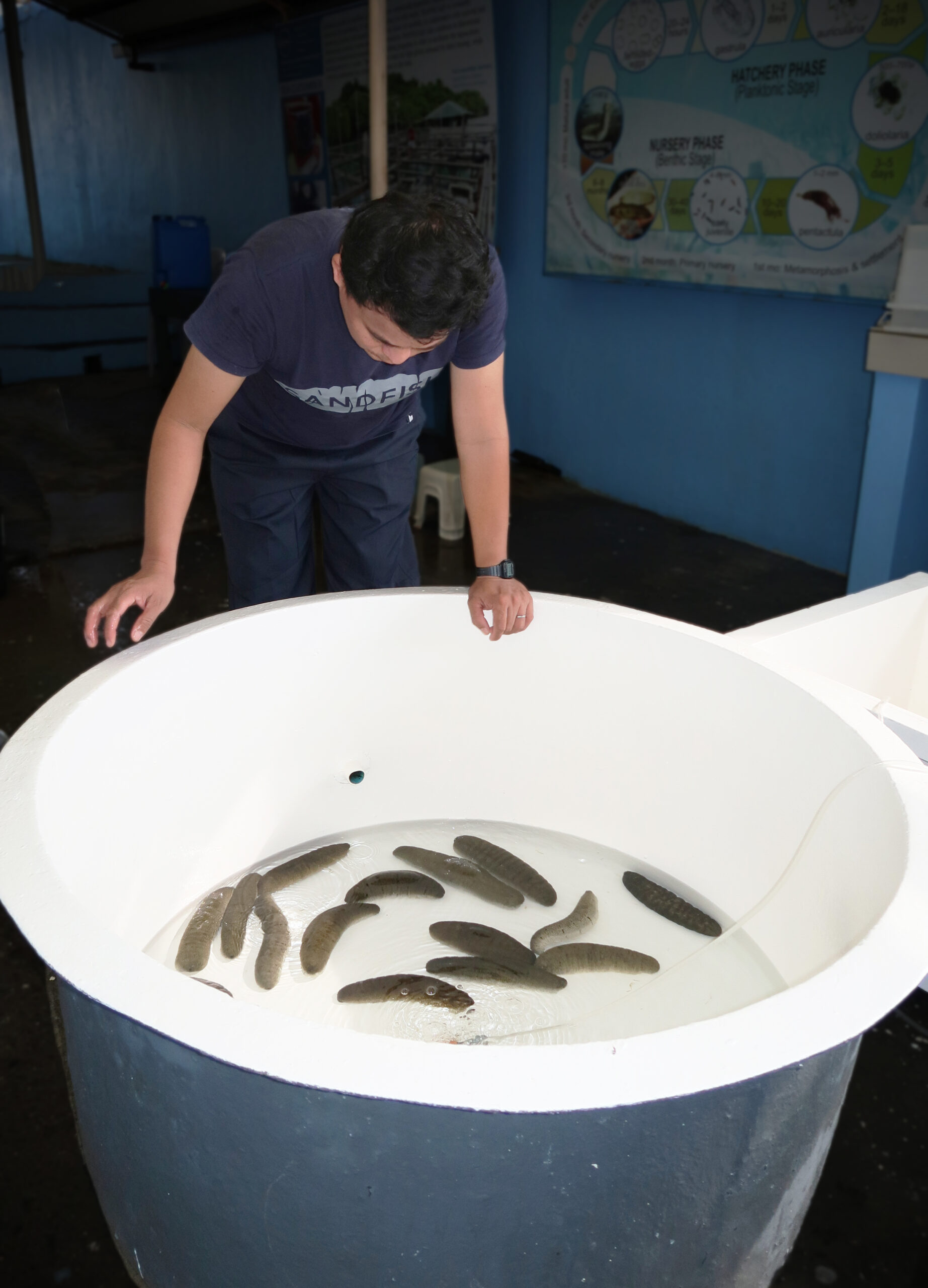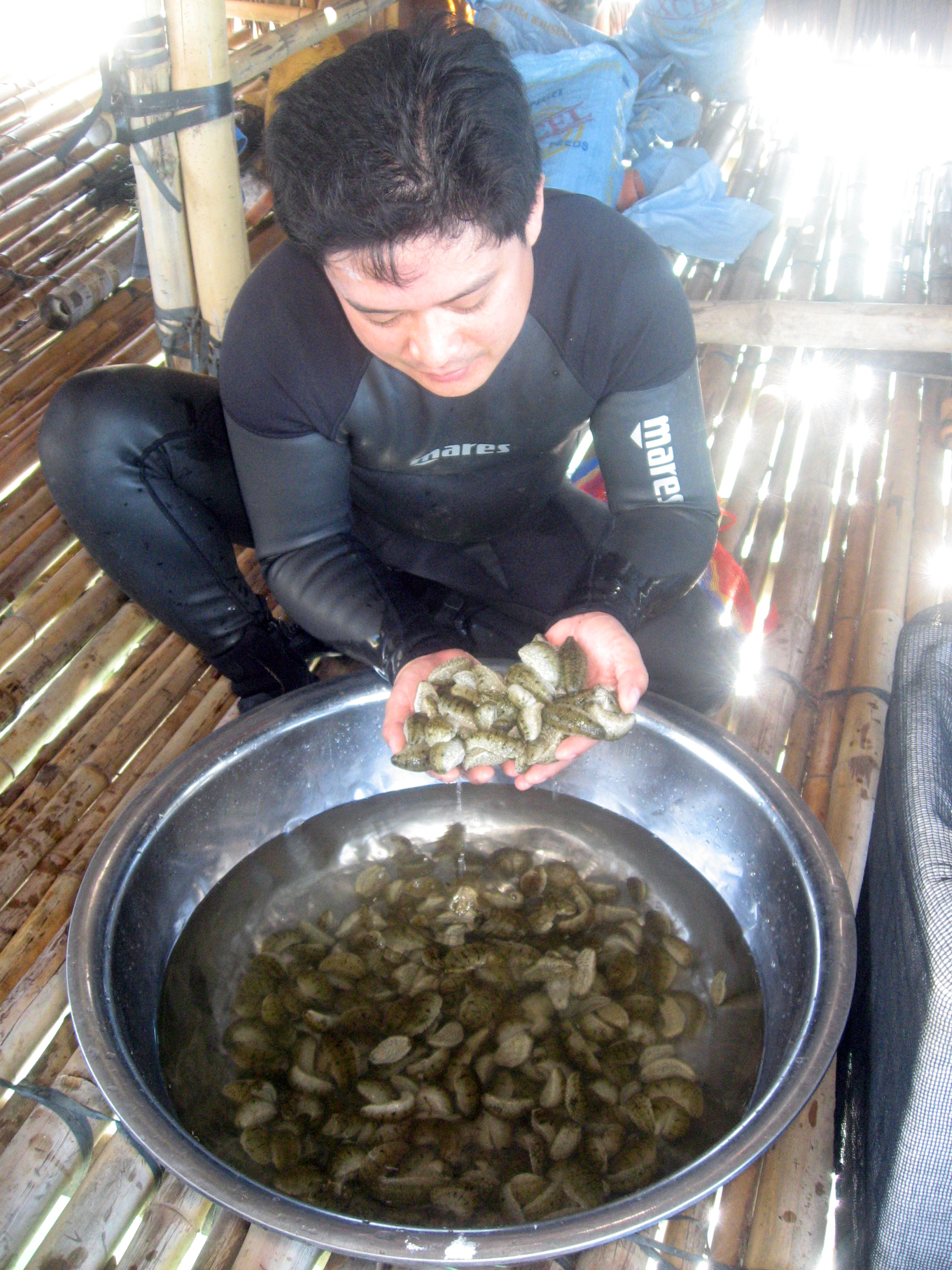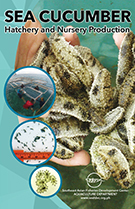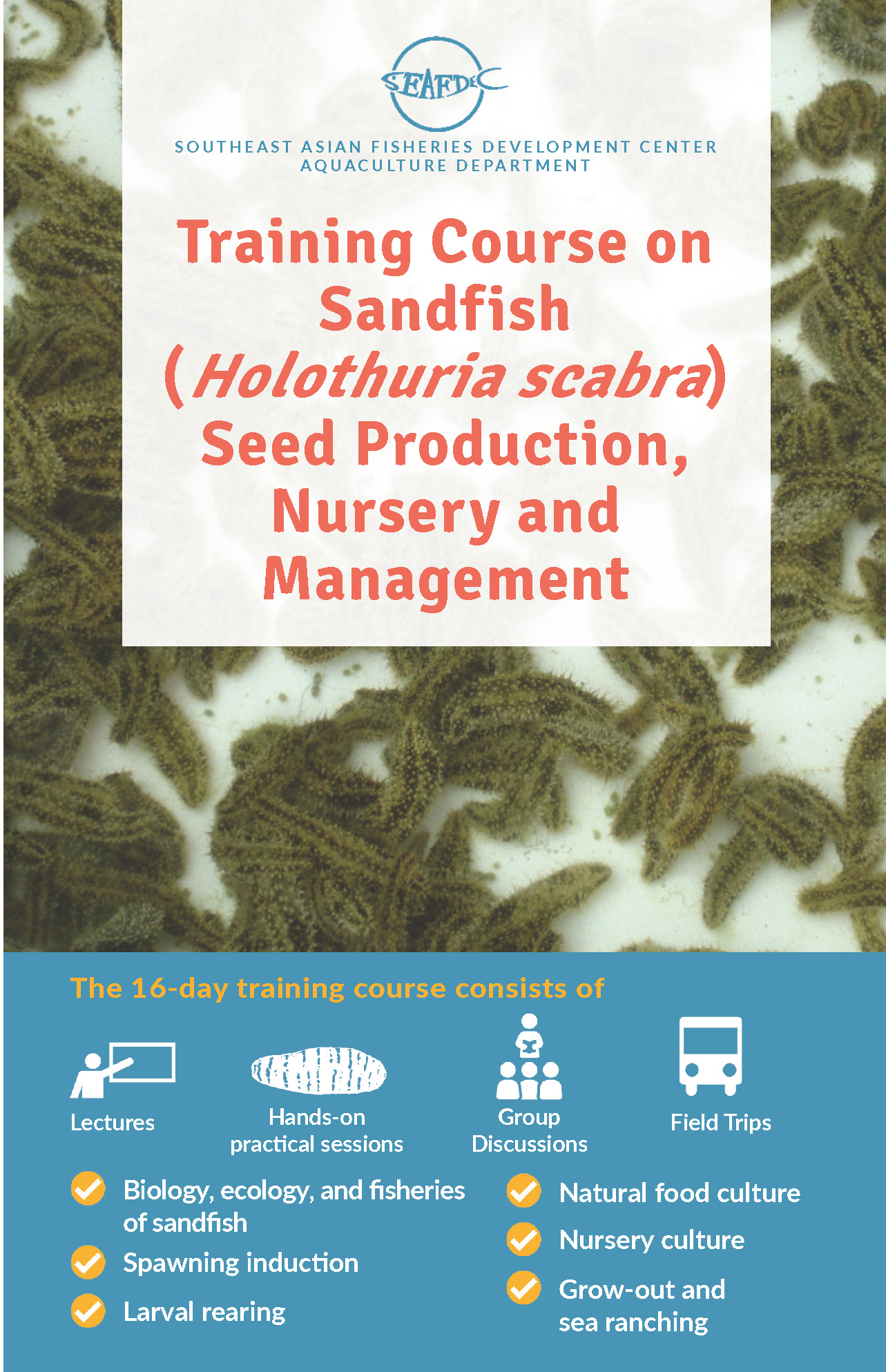Why culture SEA CUCUMBER?

Sea cucumbers are highly valued marine commodities, with prices reaching up to US$ 2,000 per kilo, when processed, dried, and packaged well into trepang or beche-de-mer. A great majority of traded sea cucumbers comes from wild harvest causing severe decline in natural stocks. Sea cucumber mariculture using hatchery-bred juveniles can offer an alternative income source especially for coastal communities, while protecting the remaining wild populations.
What is SANDFISH?
Sandfish is the common English name for one particular tropical species of sea cucumber called Holothuria scabra. It is one of the most threatened tropical species because of its high price and ease in collection. It is typically found in shallow intertidal sandy-muddy shores, commonly associated with seagrass beds and sand flats. Sandfish has one of the highest potential for aquaculture because hatchery production technology of this species is established. SEAFDEC/AQD is one of the leading institutions developing the production technologies for sandfish.

The SEAFDEC/AQD Sea Cucumber Hatchery
The SEAFDEC/AQD maintains a small-scale sea cucumber hatchery facility for sandfish spawning, larval rearing and juvenile culture. Continuous life support systems like sterilized sea water and aeration are maintained. Natural microalgal food for sandfish larvae such as Chaetoceros sp. and Naviculla sp. are produced within the facility as well. Various experimental research studies are being conducted here in order to enhance sandfish production.

How to breed SANDFISH?

Broodstock conditioning
Broodstock collected from the wild are conditioned in tanks with sandy-mud substrate and flow-through seawater. They are fed with a mixture of powdered Sargassum, formulated feed and Navicula sp. slurry. After spawning, they are returned to the field where they were collected from, so they may recover naturally.
Spawning induction
A spawning group of 20–60 mature sandfish are induced to spawn using non-lethal thermal and food stimulations. Males are expected to spawn first by releasing a steady stream of white milt with sperm through the gonopore – a small genital opening above the anterior or front end of the body. This may last up to 3 hours. Females spawn by releasing quick bursts of eggs after a characteristic bulging around the gonopore. Females typically perform 2–3 bursts at about 5 minutes interval. Fertilization then occurs in the water column.
Larval Rearing
Fertilized eggs are stocked in tanks filled with filtered and UV-treated seawater at 100–500 eggs/L at optimum temperature (26–30 °C) and salinity (28–33 ppt). Auricularia stage larvae are fed daily with Chaetoceros calcitrans. Water exchange (20–30 %) is done every two days while siphoning out wastes from the tank bottom. At Doliolaria stage, corrugated plastic sheets painted with Spirulina paste are added into the rearing tank to induce settlement. Metamorphosed Pentactula are fed with Navicula sp. slurry.

Nursery Rearing
Post-metamorphic or early juvenile sandfish (4–10 mm), at 30–45 days old, are transferred from larval tanks in the hatchery into floating hapa nets (1 m x 2 m x 1.2 m) in sea-based or tank-based nurseries. Nursery hapas are made of fine-meshed (>1 mm) net suspended with a floating PVC frame. In good sites, sandfish juveniles grow to fingerling size of 2–4 g within 1–2 months, depending on season and sea conditions. At this size, they are ready for advanced nursery rearing in pens or ponds.


Need ASSISTANCE?
Get a copy of our publications!
 |
Sea Cucumber Hatchery and Nursery Production (2018) The brochure contains information on the hatchery and nursery culture of sea cucumber. |
 |
Hatchery Production of Sea Cucumbers (Sandfish Holothuria scabra) Altamirano, J. P., & Rodriguez, J. C., Jr. (2022) 54 pp The manual describes the various hatchery production methodologies that were specifically optimized for the sandfish H. scabra. Download here — File Size: 15.71 MB Each print copy costs US$6 |
 |
AEM 48 Seed production of sandfish (Holothuria scabra) in Vietnam Nguyen Dinh Quang Duy (2010) 12 pp An extension manual describing broddstock management, larval rearing, and management of nursery systems. Each copy costs US$4 |
Check out our online bookstore for more titles: www.seafdec.org.ph/bookstore
Attend our hands-on training!
“Sandfish (Holothuria scabra) Seed Production, Nursery and Management” training course at SEAFDEC/AQD’s Tigbauan Main Station.
 |
| View training brochure |
To apply, kindly contact:
Training and Information Division
(63-33) 330 7030
training@seafdec.org.ph
Check out our training schedule: www.seafdec.org.ph/training
 SEAFDEC/AQD Southeast Asian Fisheries Development Center | Aquaculture Department
SEAFDEC/AQD Southeast Asian Fisheries Development Center | Aquaculture Department